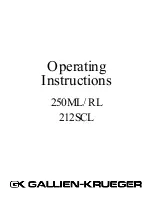
USING I.LINK
96
This unit is fitted with two i.LINK (AUDIO) connectors.
By connecting components that support i.LINK (AUDIO)
connections, in addition to digital transmission of 2-ch
linear PCM signals and audio signals that have been
compressed in multi-channel format, you can also send
and receive uncompressed multi-channel audio signals,
such as DVD audio and Super Audio CD signals for which
digital transmission was not previously possible.
i.LINK is a high-speed and bi-directional digital interface
in compliance with the IEEE1394 international standard.
• This unit supports i.LINK (AUDIO) for digital
transmission of conventional 2-channel PCM signals
and compressed multi-channel audio signals, as well as
DVD audio (multi-channel PCM) and Super Audio CD
(DSD) multi-channel audio signals using a single
IEEE1394 cable connected from an i-LINK (AUDIO)-
compatible component.
• The i.LINK transmission format supports the A&M
Protocol (Audio and Music Data Transmission
Protocol).
• i.LINK supports transmission speeds up to S400.
• Because i.LINK supports DTCP (Digital Transmission
Content Protection), digital audio signals can be
transmitted without any degradation in signal quality.
You can connect i.LINK-compatible devices to this unit
using either the daisy chain or tree connections.
■
Daisy chain connections
Use to link components together in a single chain. You can
link up to 17 different components (including this unit)
with this method.
■
Tree connections
Use to link components in a branched configuration when
3 or more i.LINK connectors are available. You can link
up to 63 different components (including this unit) with
this method.
y
• When making connections, use a 4-pin IEEE1394 cable that
supports the S400 transmission speed. We also recommend
using a cable less than 3.0 m (12 ft) in length.
• This unit supports hot plugging, a function that allows you to
disconnect or connect the IEEE1394 cable while the power is
turned on.
• The system will not work if components are connected in a loop
(where the output signal is returned to the original component).
When connecting multiple i.LINK components, be sure not to
connect them in a loop. If a loop connection is detected, the
message “Loop Connection” is displayed on this unit’s front
panel display. If this happens, disconnect the IEEE1394 cable,
and use a recommended connection method.
• Do not disconnect or connect the IEEE1394 cable from this unit
or other i.LINK components while data is being transferred.
Doing so may disrupt playback or cause noise.
• When connecting the IEEE1394 cable to this unit’s i.LINK
connectors, be sure to confirm the orientation of the connector
before connecting the cable. Using excessive force to connect
the cable to the connector in the wrong orientation will damage
the connector.
USING i.LINK
What is i.LINK?
This unit’s i.LINK interface was based on the
following design standards:
• IEEE Std 1394a-2000 (Standard for a High
Performance Serial Bus)
• Audio and Music Data Transmission Protocol 2.0
This unit’s i.LINK interface supports the following
AM824 sequence adaptation layers: IEC60958
bitstream, DVD-Audio and Super Audio CD.
Connecting i.LINK components
Notes
i.LINK
component
i.LINK
component
i.LINK
component
i.LINK
component
i.LINK
component
i.LINK
component
i.LINK
component
00EN.00_DSPZ9_GB.book Page 96 Thursday, November 13, 2003 10:55 AM
















































